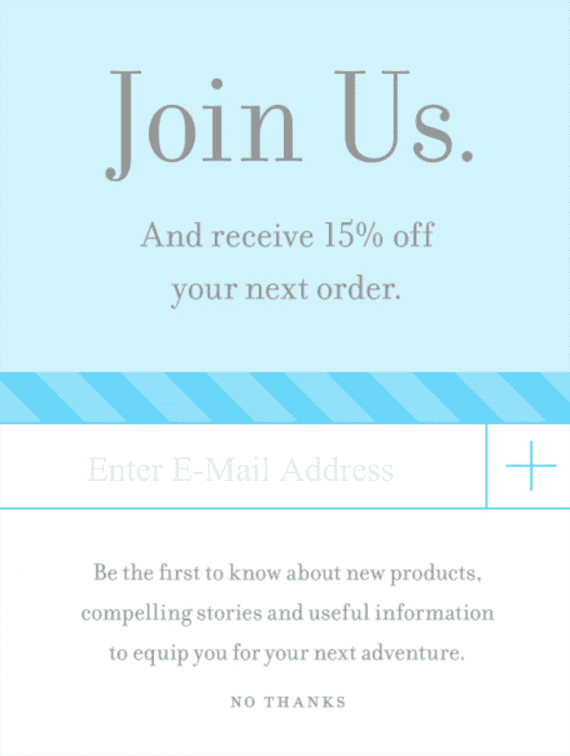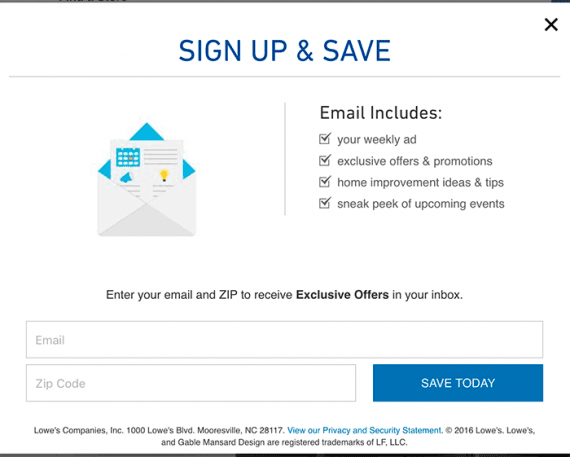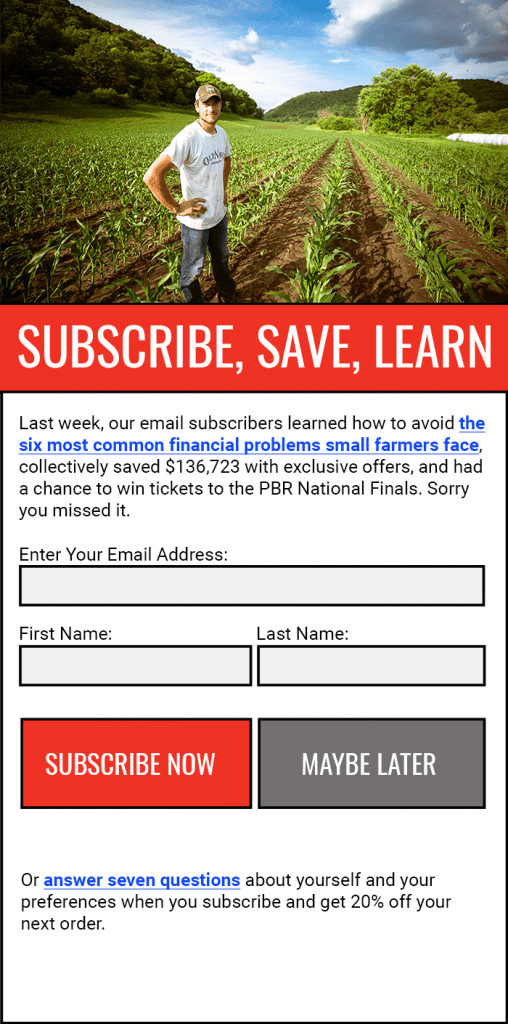If your ecommerce company only has one marketing resolution for 2019, that item should probably be to grow the email subscriber list.
Email can be one of the most powerful sales tools an ecommerce marketer has. By some estimates, nine out of 10 American adults check their email inbox daily.
Many online businesses report stunningly high returns on investment from email marketing. And more than a third of shoppers like getting special ecommerce offers via email, according to Shopify.
None of these positive outcomes are possible unless your business has email subscribers. The foundation of good email marketing is an engaged list of customers and prospects who look forward to your company’s email messages.
Why Subscribe?
When a customer or prospect subscribes to your email list, that person expects something of value in return. It may be exclusive offers, special discounts, or useful, informative, and entertaining content.
So to build your email marketing list in 2019, think about the content you will offer — content that will entice folks to subscribe and, in the long run, keep them from unsubscribing.
There is a brick-and-click retail chain in the Northwest U.S. that has four types of email content planned for 2019. Each type provides value for the subscriber.
Circular email. Many brick-and-click retail businesses publish and distribute sales circulars monthly or weekly. These circulars may be inserted into newspapers, published with online tools such as Flipp, or sent via email. A circular email is valuable because it lets subscribers know that a sale will take place and the items to be discounted. It’s especially valuable if the email is segmented or personalized to feature the most relevant offers for each recipient.
Storewide discount email. Five times a year, the aforementioned Northwest retailer offers short, storewide sales, wherein broad categories are discounted by a set percentage — for example, 20 percent off of all clothing and footwear, and 10 percent off of everything else in the store. This message is valuable to subscribers for the same reason as the circular email. It lets them know that a sale is going to take place, and they can save money. Once again, personalizing and segmenting the message will help resonate with each subscriber.
Event notifications. When your business holds or participates in special events, notify your subscribers. The value may be in simply letting subscribers know about the event and why they might like to attend. You could, also, offer discounts or giveaways associated with the event.
Content newsletters. Blog posts, videos, and podcasts are valuable to email subscribers, too. The retailer described above will send out a weekly email message in 2019 that includes helpful blog posts (both new and old), a link to the company’s weekly podcast, and a tip or recipe.
Your ecommerce company’s email program could do something similar or completely different. The key is to have valuable content.
‘Selling’ Content
When your ecommerce company has taken the time to plan email content, it can “sell” that content to prospective subscribers. Rather than just include an email subscription form in your site’s footer, you could tout the value of subscribing.
Best Made, an online retailer of outdoor clothing and gear, uses two appeals to sell its email subscription in a pop-up for new site visitors. First, the company offers a discount: Subscribe to the email list, and you’ll save 15 percent on your next order.

This Best Made pop-up makes two value appeals to potential email subscribers.
The company also makes a basic offer with content: “Be the first to know about new products, compelling stories and useful information to equip you for your next adventure.”
While that message could have been more specific, it does let a potential subscriber know what to expect, and it implies that Best Made has an email content plan.
Home improvement retailer Lowe’s uses a series of checkboxes describing the different types of email content available when it promotes its subscription via a pop-up.

The checkboxes on Lowe’s email subscription form allow potential subscribers to choose which message they want to receive and the types of content.
Potential Lowe’s subscribers can choose to receive a weekly ad (a circular email), exclusive offers and promotions, home improvement ideas and tips, and event notifications. All options help understand the value of subscribing.
A final example is a mock-up for an email subscription form I have been working on. Its purpose is to sell the value of subscribing.

This draft form includes content that would be updated weekly with the title of the most popular blog post or podcast, a description of how much subscribers saved the prior week, and important events or giveaways.
Notice the sales pitch.
Last week, our email subscribers learned how to avoid the six most common financial problems small farmers face, collectively saved $136,723 with exclusive offers, and had a chance to win tickets to the PBR National Finals. Sorry you missed it.
This paragraph gives potential subscribers an idea of the sort of content they will receive and its value.
High-converting Form
To build a strong email subscriber list this year, test and modify your subscription form.
The form should convert a significant percentage of visitors without interfering with your ecommerce site’s primary sales purpose.
The form should present the proper message, to the right customer, in the best format, at just the right time.
To achieve this, test the form. Try to identify in a series of A/B tests the best headline, best performing copy, and best call to action.
Next, how should you deliver the form? Consider testing pop-ups, sidebar forms, checkout forms, and even subscription links at the bottom of transactional emails when a customer, who is not a subscriber, makes a purchase.
You can even test when to ask for an email subscription. Should a notice pop up the first time new visitors come to your ecommerce site, or when they start to exit? Test several scenarios.
Email marketing is a powerful sales tool. In 2019, resolve to grow your list.



